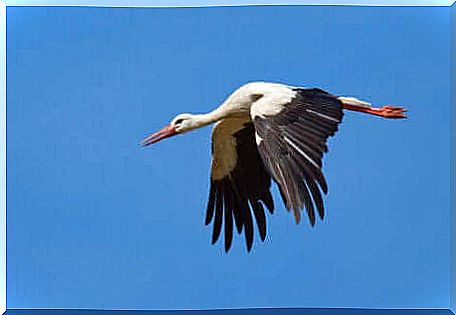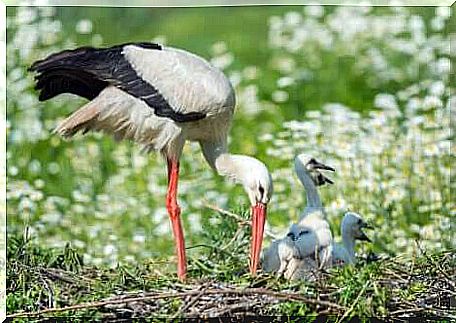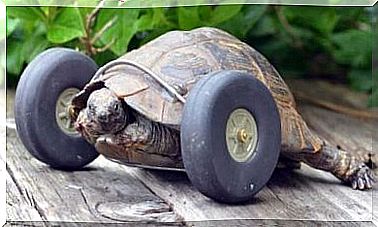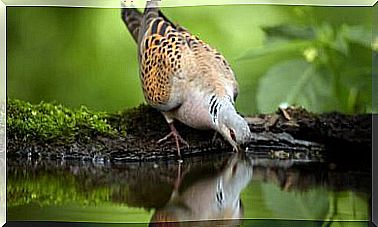White Storks: Interesting Facts About The Migration Behavior Of These Birds

The migration behavior of the white stork (Ciconia ciconia) has changed over time. For example, most birds have so far set out after breeding to fly thousands of kilometers south. During this migration, the white storks crossed half of Europe, the Strait of Gibraltar and the Sahara for almost a month.
White storks that survived this difficult journey then spent the winter in countries south of the Sahara such as Mali, Niger or Chad. They spent the months from September to early February in Africa and then returned to Europe.
White storks: amazing migratory birds
However, not all birds completed this arduous journey as it was extremely difficult and long. As a result, many white storks perished during the migration. In order to avoid crossing the Mediterranean Sea, where the warm updrafts with which storks maintain a long-lasting flight, do not form, the storks followed two other migration routes:
- One possibility is to cross the Bosphorus and the Dardanelles through the Balkans and Turkey.
- Another option is to cross the Strait of Gibraltar via the Iberian Peninsula.
Because of the last route there are many storks in Spain these days. However, the migration pattern of storks has been changing for decades. We’ll go into more detail below on how this happens.

White stork migration is no longer the same as it was before
For decades, many experts have observed that the migration of white storks has changed. Many birds spend the winter in their breeding areas.
This is partly due to climate change and the associated rise in temperature, which is making for milder winters in the Iberian Peninsula. Due to the existing landfills , storks can now find food all year round.
There are also many lagoons and wetlands in the Iberian Peninsula where they can spend the winter and find food. For example, there are the Tablas de Daimiel in Ciudad Real or the Laguna del Campillo in Rivas Vaciamadrid.
Migration, yes, but shorter
However, that doesn’t mean that white storks don’t migrate at all. According to an SEO / BirdLife study, many storks nest in rural areas of Spain. When winter sets in, they migrate to the outskirts of cities, such as Madrid. There you can find food at the Valdemingómez landfill, which is one of the largest in Europe.
This study was also verified by radio transmitters the researchers attached to two storks, Goyo and Enara. These birds migrated south from the mountains of Madrid in August.
This change in their migratory behavior appears to be beneficial for bird survival. By avoiding such a long, dangerous journey, more and more storks survive. In addition, they benefit from the changed migration pattern from a continuous availability of food, which also contributes to the survival of the white storks.
Young white storks continue the stork migration
Another interesting aspect of the SEO / BirdLife study is the difference between adult and young storks. The researchers also found that young storks continue the stork migration and continue to migrate. They make the dangerous journey to Africa while adult storks spend the winter in Europe.

In addition, according to the same study, many birds from colder parts of Europe migrate to Spain to spend the winter there.
As a result, the number of storks in Spain increases significantly in winter: on the one hand because of those who do not move to Africa in winter and on the other hand because of those who come from northern Europe.
Migration routes of the white storks in detail
The Spanish Ornithological Society, in collaboration with other European organizations, has studied the migration of white storks for years. They recently published a detailed study that for the first time contained data from GPS radio transmitters on migrating storks. The results were different:
- First, they confirmed the hypothesis that young storks migrated to the Sahel, while adult storks overwintered in Spain.
- Central European storks, the majority of which spent the winter in Spain, had a higher survival rate (around 50%) than Spanish storks that migrated to Africa. Of the latter, only 1 in 10 returned to their breeding site.
- Meanwhile, adult storks overwintered mainly in Europe. This, in turn, helped the vast majority survive the following year.
In summary, the migration behavior of the white storks and this change are decisive. In fact, it likely predicts general change for many migratory birds.
Although the change in their migration pattern has a positive effect on the survival of the white storks, it remains to be seen how climate change will affect these birds.








